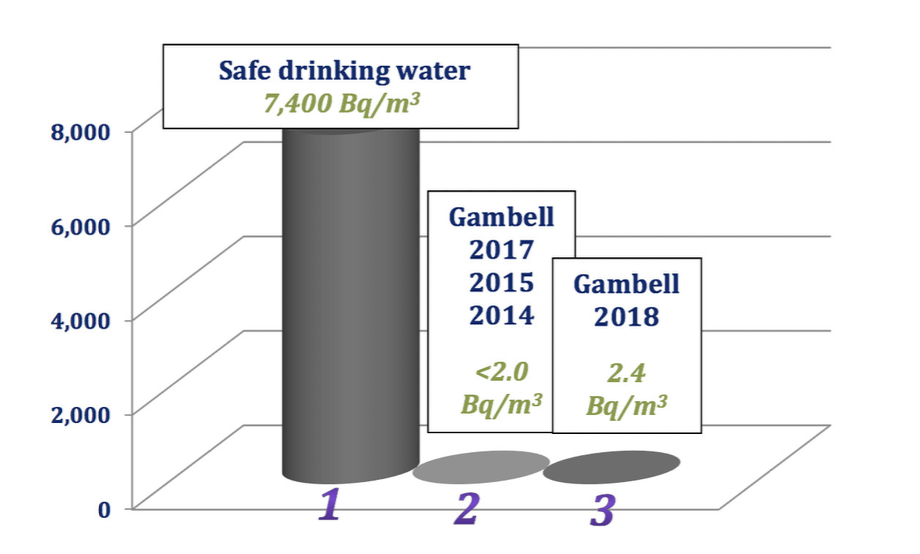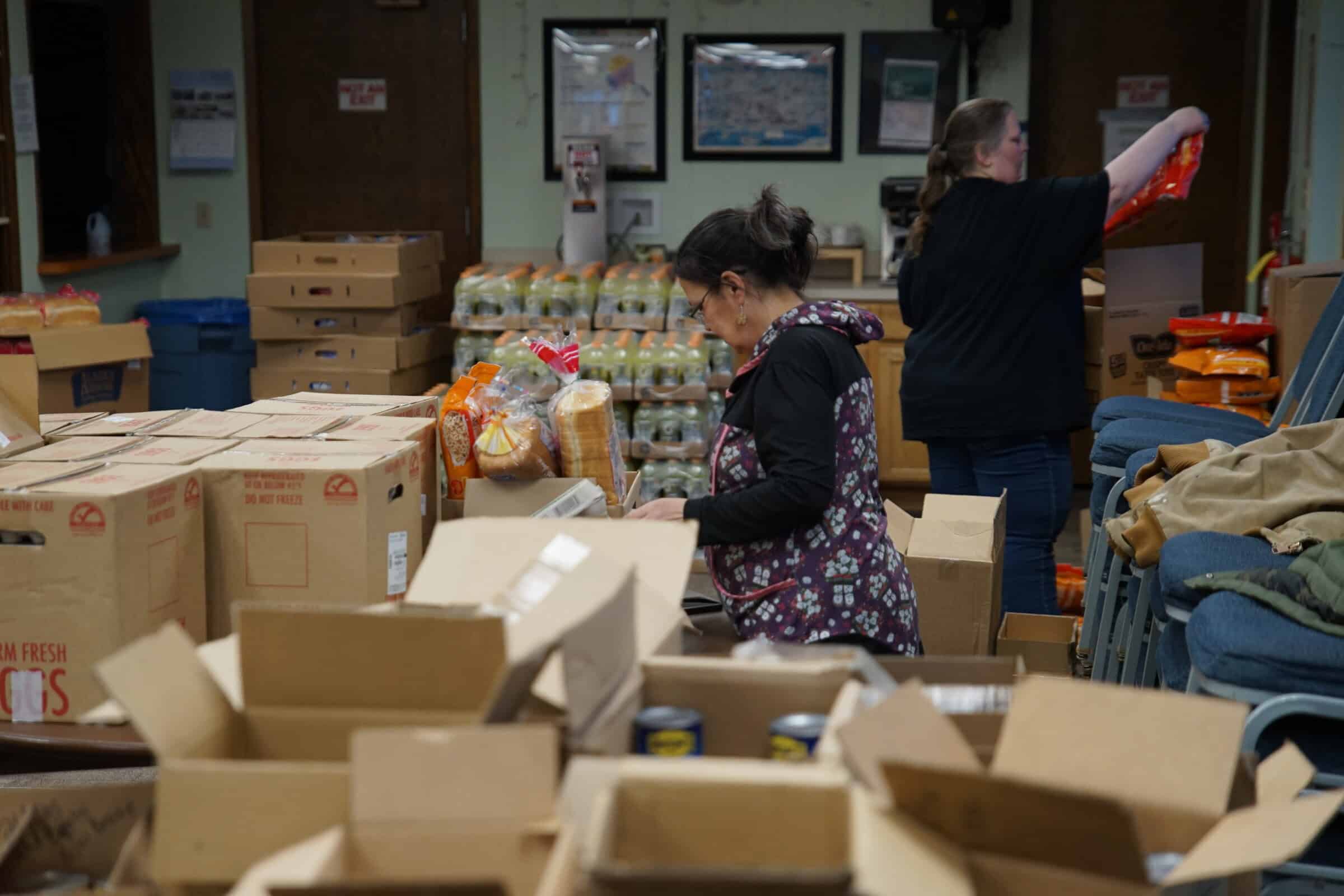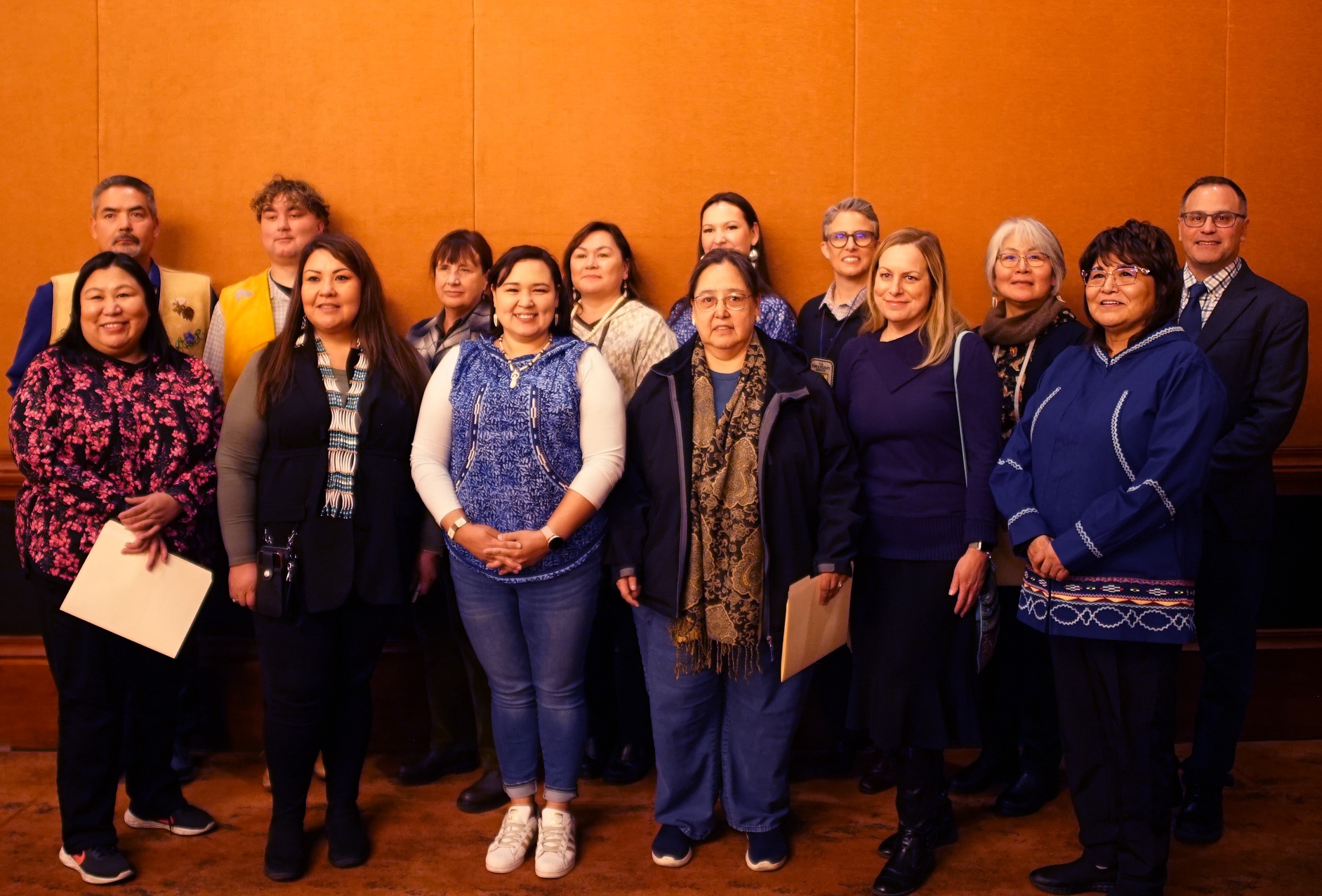Results of seawater monitoring for cesium-137 and cesium-134 near Saint Lawrence Island
Created by: Alaska Sea Grant
Background
Since the damage of the Fukushima nuclear power plant in 2011, many Alaskans have expressed concerns about the presence of radiation in seawater and marine wildlife. Measurable amounts of radioactive substances have been present in oceans and seas, including the Bering Sea, for long periods of time. These come from a combination of naturally occurring and man-made sources (e.g., nuclear weapons tests, and accidental releases from nuclear reactors). Two types of radioactive substances cesium-137 and cesium-134 are byproducts of nuclear fission and were among the radioactive isotopes released when the Fukushima nuclear reactor was damaged. The Woods Hole Oceanographic Institution has been tracking the spread of cesium-134 and -137 in ocean currents that flow from Japan to the western US and Canadian coastlines. Historically, levels of cesium-137 in the Pacific Ocean are very low, generally below 2.0 becquerels per cubic meter1 (Bq/m3). For comparison, the US Environmental Protection Agency (EPA) considers drinking water levels of cesium-137 of up to 7,400 Bq/m3 to be safe for human consumption (Figure 1) which is approximately 3,700 times higher than any background levels measured.
Expectation and Results
Figure 1. (1) Cesium-137 level allowable in safe drinking water, (2) cesium-137 levels in seawater sampled during 2014, 2015, 2017, and (3) cesium-137 level in the 2018 seawater sample. All listed units are Bq/m3.
Based on their knowledge of ocean currents, residents of Saint Lawrence Island anticipated an increase in the levels of cesium-137 in seawater after the Fukushima Daiichi accident. Seawater samples collected during 2014, 2015, 2017, and 2018 were collected and analyzed for cesium-137 and cesium-134 by the Woods Hole Oceanographic Institution Center for Marine and Environmental Radiation. No seawater sample was collected during 2016. Results of 2014, 2015, and 2017 samples showed that cesium-137 was still being detected at background (pre-accident) levels, ≤ 2.0 Bq/m3 (Table 1).
Table 1. Collection date and levels (Bq/m3) of cesium-137 and 134 measured in seawater near Gambell during 2014–2018.
*Indicates an increase in cesium-137 levels in seawater (above pre-accident levels) that is attributed to Fukushima-related contamination. Cesium-134 was not detected in any seawater sample. All sampling results are publically accessible via http://ourradioactiveocean.org/results.html.
|
Year |
Date |
Cesium-137 (Bq/m3) |
Cesium-134 (Bq/m3) |
|
2018 |
August 3 |
2.4* |
not detected |
|
2017 |
April 2 |
1.8 |
not detected |
|
2016 |
N/A |
no sample available |
no sample available |
|
2015 |
August 5 |
1.2 |
not detected |
|
2014 |
April 25 |
1.3 |
not detected |
The level of cesium-137 measured in the 2018 seawater sample was found to be 2.4 Bq/m3, which
is slightly higher than pre-accident levels. Scientists at Woods Hole attribute this slight increase to Fukushima-related contamination, which has been detected at various locations along the west coast of the US and Canada. Despite the 0.4 Bq/m3 increase of cesium-137 in seawater samples from 2018, it is important to note that the levels are still thousands of times lower than the level considered of concern in drinking water by the EPA. The other isotope that was screened for (cesium-134) was not detected in any seawater samples collected near Gambell.
Conclusions
- Seawater in the Bering Strait region has been monitored for many years by residents of Saint Lawrence Island. Very low levels of cesium-137 have consistently been found.
- Saint Lawrence Island residents anticipated an increase in cesium-137 after the Fukushima disaster, based on their understanding of ocean currents.
- A slight (0.4 Bq/m3) increase in cesium-137 was confirmed in a seawater sample collected near Gambell in 2018, which has been attributed to the arrival of the northern edge of the Fukushima plume.
- Cesium-137 in seawater in the Bering Strait region continues to be extremely low and is not considered a health concern.
- Cesium-134 was not detected in any seawater samples near Saint Lawrence Island.
- Residents of Saint Lawrence Island desire expansion of cesium-137 monitoring efforts in the northern Bering Sea/Bering Strait region.For more information
You can also learn more about radiation and health at these websites.
DHSS: http://dhss.alaska.gov/dph/Epi/eph/Pages/radiation/default.aspx
Alaska DEC: https://dec.alaska.gov/eh/radiation/
US FDA: https://www.fda.gov/newsevents/publichealthfocus/ucm247403.htm CDC/ATSDR: https://www.atsdr.cdc.gov/phs/phs.asp?id=575&tid=107
Woods Hole Oceanographic Institute: http://www.whoi.edu/oceanus/feature/heath-risksAcknowledgements
Teamwork was essential to document the status of cesium-137 and cesium-134 in the seawater
near Saint Lawrence Island, and included Native Village of Gambell, Native Village of Savoonga, Woods Hole Oceanographic Institution, State of Alaska Dept. of Epidemiology, Norton Sound Regional Health Corporation, and Alaska Sea Grant. Funding for seawater analyses was provided by Alaska Native Tribal Health Consortium, Alaska Sea Grant, Norton Sound Economic Development Corporation, and a private donation.Literature cited
1Kamenik, J., Dulaiova, H., Sebesta, F., Stastna, K., “Fast concentration of dissolved forms of cesium radioisotopes from large seawater samples,” Journal of Radioanalytical and Nuclear Chemistry 296(2012): 841–846.
Alaska Sea Grant MAB-72 University of Alaska Fairbanks March 2019 College of Fisheries and Ocean Sciences
alaskaseagrant.org
[googlepdf url=”https://kawerak.org/wp-content/uploads/2020/03/MAB-72-Results-of-Seawater-Monitoring-190314c-1.pdf” download=”Download” ]





